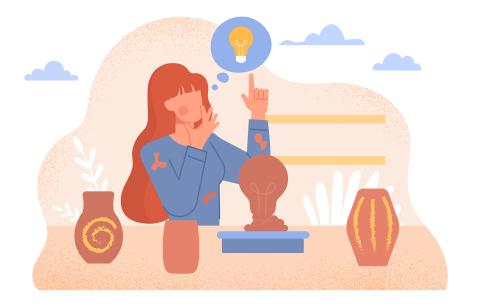Story by Margie Peterson
Image by iStock/Rudzhan Nagiev
Ludovica Cesareo explores the role product creativity plays in sustainability.
The movement to reduce waste and create a more sustainable world is embraced by Nobel laureates and school children, celebrities and politicians, governments and nonprofits. Iconic companies such as Apple and Google routinely tout their commitment to waste reduction and energy efficiency.
So, how do you get people to act on that sentiment and keep the things they buy for a longer period of time rather than disposing of them? To answer that question, Ludovica Cesareo, assistant professor of marketing at Lehigh Business, worked with faculty from three universities in Italy to conduct seven studies, including five online. Of the in-person studies, one was through Lehigh’s Behavioral Research Lab and the other took place in Rome.
The experiments looked at whether the creativity, i.e., novelty and usefulness, of a mass-marketed product extended the time its owner kept it. Cesareo said they focused their experiments on mass-marketed goods because consumers expect luxury goods to be creative.
“Creativity is the ability to produce novel, imaginative, and useful ideas in any domain, and it’s a key product characteristic in design, furniture, art and fashion,” she says.
Cesareo hypothesized that people keep creative products longer because they develop an emotional attachment to them.
“In the marketing literature, emotional attachment has lots of positive outcomes: commitment, trust, brand loyalty, willingness to pay,” Cesareo says. Her research focused on whether that attachment results in keeping a product longer.
For one online experiment, Cesareo and the team recruited 195 participants and randomly assigned them to imagine they owned a scarf that they described in one of three ways: highly creative, ordinary or there was no mention of creativity.
“Participants wrote what they thought this scarf looked like and then we measured how long they planned to own and use the product, and how they felt about it,” she says.
“As expected, the higher the creativity of the product, the longer consumers planned to continue using it,” she says.
In one in-person experiment, Cesareo had 245 Lehigh students bring in a t-shirt they had purchased themselves and were ready to dispose of. The students then reported on how creative they considered the t-shirt and how long they had owned it.
“The higher the creativity of the t-shirt, the longer the students had owned it,” Cesareo says.
In another in-person experiment, Cesareo’s research partners in Italy gave 110 university students reusable plastic cups. Some students received plain cups and others were given cups that had creative designs. Four weeks later they were surveyed on whether they still had their cup. Among the students who still kept theirs, the majority had received the creative cup.
Managers should invest in creativity, design more novel offerings and emphasize creativity in messaging and advertising to increase consumers’ emotional attachment to a product, Cesareo says. That’s especially true for mass-market brands, which contribute so much to polluting the environment.
“We think this work is important because a lot of the marketing research on sustainability has focused on the recycling dimension,” she says. “We look at the reuse dimension. Extending product usage is incredibly valuable because it really reduces the impact for carbon, water and waste footprints of companies.”
Why it Matters
Designers can advance an ethic of sustainability by making their products more creative.


